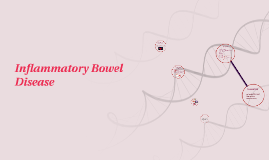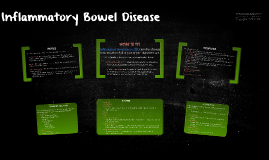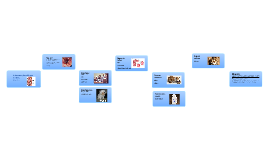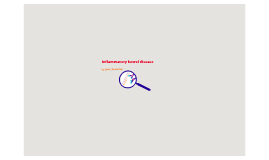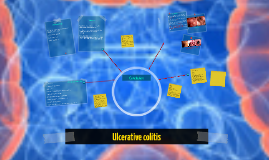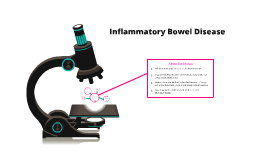Inflammatory Bowel Disease:
Transcript: IBD is used to describe the previous mentioned diseases since they are the most prevalence of most cases. Crohn’s disease affects the entire digestive system, while Ulcerative Colitis mainly affects the large intestine as well as the rectum (Abraham, Cho, 2009). (Related to IBD) The symptoms for both diseases are similar, and they are belly pains, weight loss, bloody or recurring diarrhea, and extreme tiredness. Some people my also experience additional symptoms such as anemia, vomiting, and/or a fever though most people won’t have these extra symptoms. IBD in Canada What is IBD? Inflammatory Bowel Disease or Disorder (IBD) is a disease that causes chronic inflammation and ulcers, sometimes lasting for a long time, in your digestive tract. There are many different types of IBD, but the major two types include Crohn’s disease and Ulcerative Colitis. (Health Care systems) International Relevance The determinants of health that this program discusses include socio-economic status since they provide support for families that have been affected and cannot provide for themselves, they also discuss education, gender roles, and provide statistics about the diseases and its effect on those aspects. Finally, this health program also addresses social support networks, social and physical environment, child development and coping skills and personal health practices in their about page that talks about Crohn’s and Colitis and it’s impact on families and communities. Income and Social Status (socio-economic status) Education Social Support Health Services Inflammatory Bowel Disease: Social Determinants of Health Social Determinants of Health This program is a national only program in Canada that is volunteer based and is a charity funded program that aims to assist in aiding the families, children, and adults that are afflicted with Crohn’s disease or Ulcerative Colitis. They also help the lives of the people afflicted with Crohn’s or Colitis through patient programs, advocacy, research, and awareness (Crohn’s and Colitis Canada, 2014). They are also one of the top two health charity funders for the Crohn’s and Colitis diseases’ research in the world (Crohn’s and Colitis Canada, 2014). Canada's Relevance They also have many objectives in their mission, which is to raise funds to increase public awareness of these diseases as well as their organization, educate and teach families, patients, governments, and industries about these diseases, invest in research to advance the technology and knowledge about these diseases, and advocate to stakeholders and governments for those that have been afflicted by Crohn’s and Colitis (Crohn’s and Colitis Canada, 2014). References Both Ulcerative Colitis and Crohn’s disease are not common and are not associated with an increased mortality, rather with a decreased quality of life and an increased mortality and are capable of a relapse (Loftus, Sandborn, 2002). There is evidence that suggests that IBD is the result of an inappropriate response to intestinal microbes in a genetically susceptible host (Abraham, Cho, 2009). Canada has among the highest reported prevalence (number of people with CD or UC) and incidence (number of new cases per year) of IBD in the world. 20-30% of people with IBD are diagnosed before the age of 20. Canada has one of the highest rates of childhood-onset of IBD in the world. The total costs from IBD in Canada are conservatively estimated at $2.8 billion per year in 2012 (over $11,900 per person with IBD every year). Direct medical costs totaled over $1.2 billion per year. They are dominated by medications ($521 million), followed by hospitalizations ($395 million) and physician visits ($132 million). IBD causes significant non-financial costs to both patients and their families. Quality of life in IBD is low across all dimensions of health, compared to the general population. IBD severely impacts quality of life through ongoing debilitating symptoms, reduction in ability to work, social stigma, management of bathroom access issues, difficulty Symptoms of IBD Crohn’s and Colitis. (2014). Crohn’s and Colitis Canada. http://www.crohnsandcolitis.ca/site/c.dtJRL9NUJmL4H/b.9012407/k.BE24/Home.htm David Fitzsimmons (Cartoonist).(2012). Anti-Vaxxers[Cartoon], Retreived Sep 21,2016, http://knowyourmeme.com/photos/912647-anti-vaccination-movement Abraham,C. Cho.J.H (2009). Inflammatory Bowel Disease.The New England Journal Of Medicine, Vol 361, pg 2066-2078 DOI: 10.1056/NEJMra0804647 Loftus,E.V , Snadborn.W.J (2002). Epidemiology of Inflammatory Bowel Disease. Gastroenterology Clinics of North America, Vol 31 Issue 1, pg 1-20 Mayo Clinic Staff (2014/09/09) Mayo Clinic http://www.mayoclinic.org/diseases-conditions/ulcerative-colitis/basics/definition/con-20043763 NHS (2015/03/20) NHS Choices http://www.nhs.uk/conditions/inflammatory-bowel-disease/Pages/Introduction.aspx# CrohnsandColitisUK(Author). What are Crohn’s and Colitis? Retrieved: 10/03/2016,






